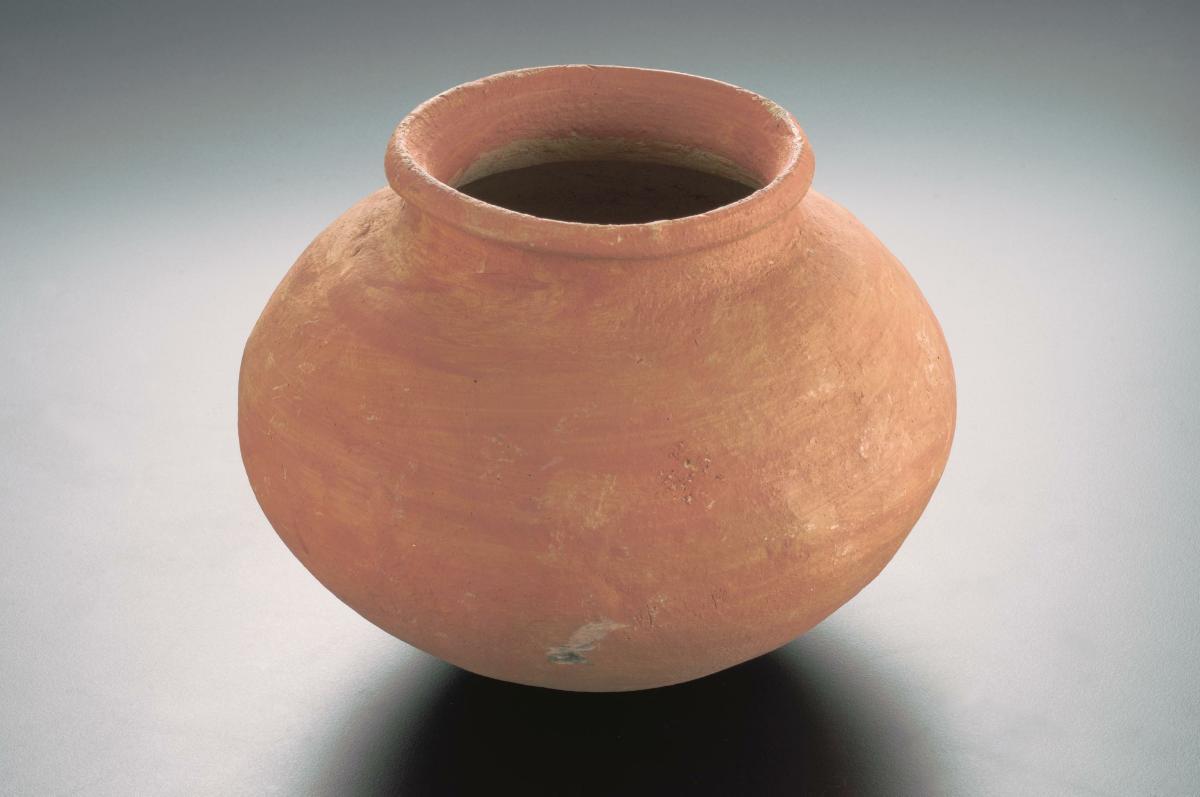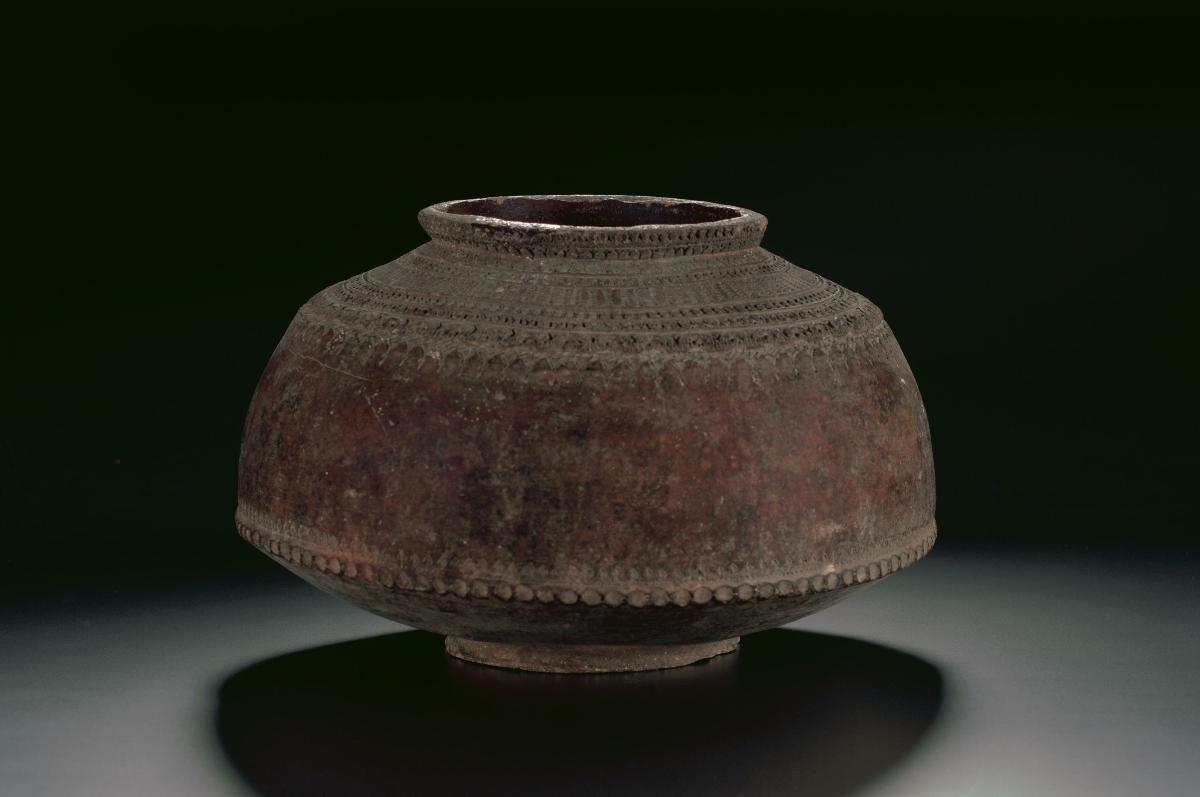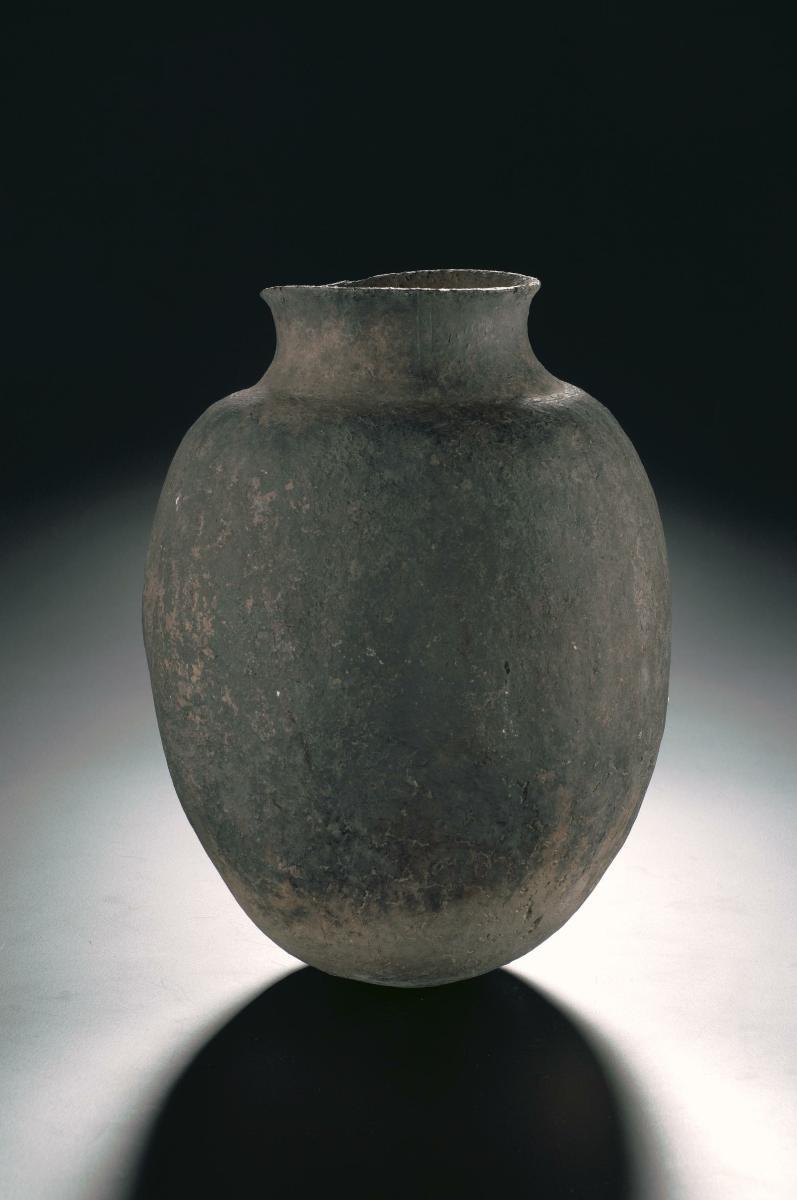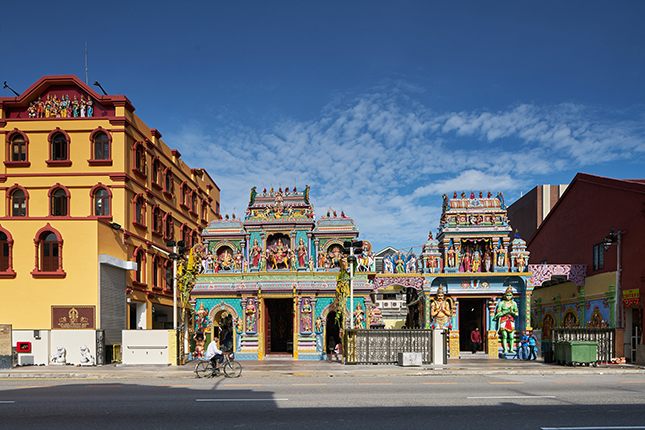Gross measurement: Dia,
of body: 22.5 cm,
Gross measurement: Dia,
of mouth: 13.3 cm
Earthenware pots such as this example are typically used to carry or store water. The porous nature of the unglazed ceramic serves to keep the water cool by means of evaporation through its surface. A standard shape for such pots is round-bottomed, made to be balanced on the head or the hip and to be carried long distances. They can either be handmade or wheel-thrown. A wide range of pots are made for everyday household use with regional variations of design and decoration. They can also be made to store other liquids or grains. As refrigeration is not an affordable option for most village households in India, unglazed earthenware is perfect for storing food, and additionally is cheaper than plastic, glazed China or stainless steel.The production of clay vessels in India is an ancient tradition that dates back to 6,000 BCE. Evidence of pottery has been found in the early settlements of Mehrgarh from the Indus Valley Civilisation. Many of the forms, techniques and designs of this period are still in use today.

















